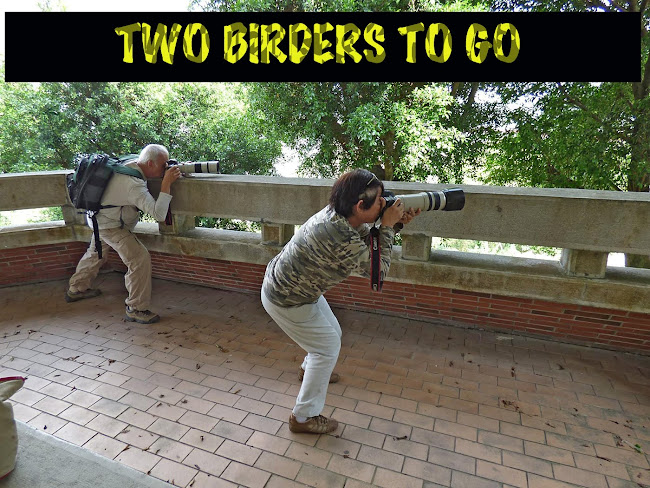
 Grey. That was how it was on Saturday, March 24th. All throughout the day. Except for brief bursts of sunlight, it was grey. So I had my flash and better beamer mounted on my camera as we headed out to Sepulveda Wildlife Area in Van Nuys.
Grey. That was how it was on Saturday, March 24th. All throughout the day. Except for brief bursts of sunlight, it was grey. So I had my flash and better beamer mounted on my camera as we headed out to Sepulveda Wildlife Area in Van Nuys.As soon as we entered the place, Cynthia pointed to a tiny clump of feathers perched at the tip of a bare branch. "Allen's Hummingbird!" Her picture of the hummer best demonstrated the kind of day we were going to have: it was, indeed, crappy.
The lake was not its usual bustling with bird-activity except for the usual coots and grebes. The lakeside and the surrounding area however, were bursting with song! Brewer's Blackbirds were filling the air with the cacophony of their spring serenades. Red-winged Blackbirds were showing off their brilliant epaulets while Great-tailed Grackles whistled, gurgled and croaked unceasingly. Not to be outdone, Song Sparrows were doing what they were named for, while White-crowneds were chip-chipping away.
As we were perambulating along, I saw something big and brown fly through the grove and landed on a sycamore branch ahead of us. Grabbing my binos and focusing on the mysterious bird, I was a bit startled as I was staring face to face with a Sharp-shinned Hawk. The hawk, perhaps oblivious of our presence continued in its quest for breakfast. It would fly with great agility among the tree branches and would land on a branch and then would look around, sometimes in a most awkward way.
"Are you sure it's a Sharpie and not a Coopers?" Cynthia asked with a tinge of doubt in her tone, knowing how difficult it was to distinguish between the two raptors especially in their juvenile phase such was the case here.
"I'm sure." I replied confidently, explaning in tedious detail the head and feet size and the squareness of the tail edge.
Further up the trail, we encountered another raptor that needed a proper identification. Again, another juvenile, this time a Red-shouldered Hawk and not the similarly plumaged Red-tailed Hawk. Cynthia had some flight shots of this magnificent creature. When it comes to flight shots, I bow to my darling wife. (Only because my gear is heavier and my darn flash wasn't working properly. )
Anyway, the weather still not cooperating, we decided to give Lake Balboa a try, but then there were more people there than birds. Except blackbirds. Blackbirds of various sorts seem to flock in that area, Red-wings, Great-tailed Grackles, Tri-colored and Brewer's were all abundantly represented.
Having had enough of blacks and greys, we headed home.








